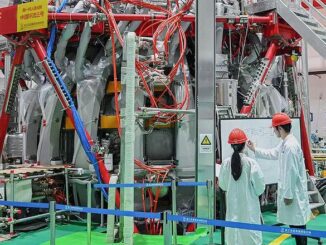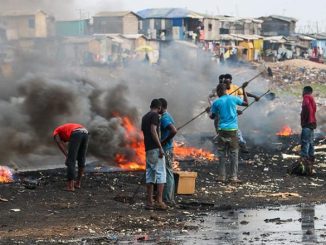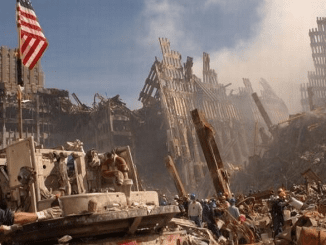
ROCKVILLE, Maryland, April 8, 2020 (ENS) – As the nation is focused on coping with the coronavirus pandemic, the U.S. Nuclear Regulatory Commission, NRC, is quietly moving to permanently deregulate massive amounts of low-level radioactive waste, but not spent nuclear fuel.
By means of a proposed interpretive rule, the NRC wants to abrogate longstanding requirements that, with very limited exceptions, such waste must be disposed of in licensed radioactive waste sites meeting detailed safety standards and subject to NRC inspection and enforcement, according to Public Employees for Environmental Responsibility, PEER.

Released in the midst of the COVID-19 crisis, the NRC plan would, in effect, allow every reactor in the country to dump virtually all its radioactive waste
except spent fuel in local garbage dumps that are designed for household trash, not for plutonium. The local dumps would dispose of the radioactive material “by land burial.”
The NRC says low-level radioactive waste is generated by, “A variety of industries, hospitals and medical institutions, educational and research institutions, private or government laboratories, and nuclear fuel cycle facilities … as part of their day-to-day use of radioactive materials. Some examples include radioactively contaminated protective shoe covers and clothing; cleaning rags, mops, filters, and reactor water treatment residues; equipment and tools; medical tubes, swabs, and hypodermic syringes; and carcasses and tissues from laboratory animals.”
Very low-level radioactive waste would be less radioactive than these examples.
The NRC explains that the interpretive rule it is proposing “describes a method by which licensees could dispose of licensed material – by transfer to persons who hold specific exemptions for the purpose of disposal” as well as “those who would transfer licensed material to such persons for disposal.”
At present, in order to pursue alternate disposal, a licensee must be granted authorization and the non-licensed receiving facility must receive a licensing exemption from the NRC or the state where the disposal site is located.
Although the proposal declares the NRC’s intent to limit this deregulation to “very low-level radioactive wastes” (VLLW), PEER points out that “the actual proposal allows doses to the public equivalent to more than 900 chest X-rays over a lifetime, with a cancer risk 20 times higher than the upper end of the U.S. Environmental Protection Agency’s acceptable risk range and thousands of times the risk goal for Superfund sites.”
The Commission explains that, “The term VLLW is not a formal designation and does not have a statutory or regulatory definition. In general, VLLW contains some residual radioactivity, including naturally occurring radionuclides, which may be safely disposed of in hazardous or municipal solid waste landfills.”
The EPA defines VLLW as “low-activity waste.” Among the wastes that could be addressed as “low-activity” are mixed wastes containing both radioactive and hazardous waste components – chemically hazardous and radioactive wastes containing natural radioactivity, cleanup wastes, and other low-level radioactive wastes.
PEER holds that allowing such disposal of VLLW would be dangerous to public health, saying that, “Unlicensed radioactive waste dumps under the proposal would be allowed to expose the public to 2.5 times higher levels of radiation than allowed for licensed low-level radioactive waste sites under NRC’s current regulations. The proposal allows unlicensed dumps to take all the radioactive waste now required to go to licensed disposal facilities.
Both the National Academy of Sciences and the Environmental Protection Agency calculate that the risk of such doses would be every 500th person exposed getting cancer from the radiation, PEER points out.
And unlicensed radioactive waste dumps would be established without public notice or opportunity for hearing and free of any subsequent NRC oversight, says PEER.
“NRC’s action could transform most municipal dumps into radioactive repositories, with essentially no safeguards for workers, nearby residents, or adjoining water tables,” said PEER Pacific Director Jeff Ruch, pointing out that plan eliminates the incentive to pay for the additional safety measures, radiation monitoring, health physics personnel, design standards, and NRC inspections required of licensed operators.
“This stealth action would functionally deregulate the bulk of the nation’s nuclear waste stream,” said Ruch.
But in a May 2018 scoping session on this proposed interpretive rule, Joe Weissman, vice president, government and radiological affairs with US Ecology, Inc., which has operated licensed low-level radioactive waste disposal facilities in the United States since the 1960s, told the Commission, some very low-level radioactive waste is already going to non-licensed, state-regulated sites.
Weissman wrote, “A portion of the radioactive materials that most likely would be disposed of as VLLW are already being disposed at non-licensed, state-regulated RCRA hazardous waste facilities under authorization via §20.2002,” the law that would be changed if this proposal is adopted.

The Resource Conservation and Recovery Act, RCRA, enacted in 1976, is the main federal law in the United States governing the disposal of solid waste and hazardous waste.
“In fact,” wrote Weissman, “US Ecology has proven that large quantities of low-activity radioactive materials can be safely and securely disposed in RCRA Subtitle-C hazardous waste facilities like the one in Grand View, Idaho.”
The Grand View Waste Site, 50 miles south of the capital Boise, is one of four commercial hazardous waste sites that accept low-level radioactive waste. The others are at Barnwell, South Carolina; Clive, Utah; and at Hanford, Washington.
Six months after Weissman submitted his comment to the Commission, an explosion at the Grand View hazardous waste site killed one worker, injured three others and heavily damaged a building, the Associated Press reported November 18, 2018.
The NRC is accepting comments on the proposed interpretive rule through April 20, 2020. People may submit comments by either of the following methods:
Federal Rulemaking Website: Go to https://www.regulations.gov and search for Docket ID NRC-2020-0065. Address questions about NRC docket IDs in Regulations.gov to Jennifer Borges; telephone: 301-287-9127; email: Jennifer.Borges@nrc.gov.
Mail comments to: Office of Administration, Mail Stop: TWFN-7-A60M, U.S. Nuclear Regulatory Commission, Washington, DC 20555-0001, ATTN: Program Management, Announcements and Editing Staff.
Copyright Environment News Service (ENS) 2020. All rights reserved.



